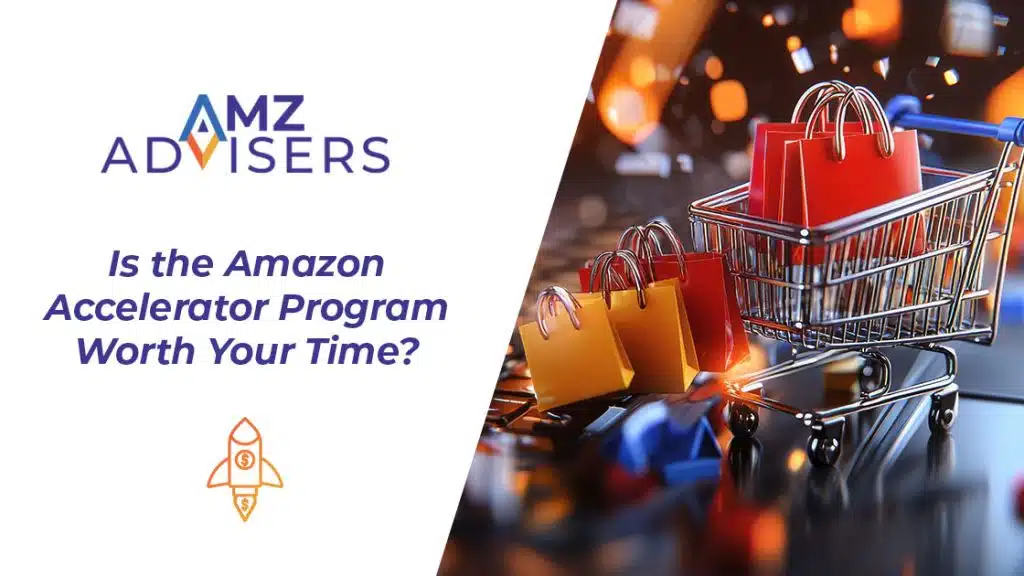In this comprehensive Amazon FBA guide, you’ll get the nuts and bolts about how FBA works for Amazon sellers.
Fulfillment by Amazon (FBA) is a convenient solution for sellers who don’t want to waste time on shipping, logistics and customer service. By leaving these tasks to the Amazon team, sellers get the chance to focus on other important aspects of their operation (like increasing their sales and working on their marketing).
Amazon FBA enables brands to access the retail giant’s logistics machinery without lifting a finger. Sellers are free from dealing with inventory management. You just pack and deliver stock to a warehouse, and Amazon takes it from there. In this Amazon FBA Guide, you’ll learn everything you need to know about this fulfillment provider method. You’ll surely be ready to sign up for it once you get to the end.
What is Amazon FBA?
Let’s say that you have a product, but dealing with packing and shipping seems like a daunting task. That’s where Amazon FBA comes in.
The program was launched in 2006. In short, FBA gives access to its own logistics machine. This includes warehouses, stock management, suppliers and customer service.You do the selling and Amazon handles everything for you.
Sellers prepare the items and ship them to an Amazon fulfillment center. Then, when someone buys, Amazon picks, packs, and ships on your behalf. In short, small businesses could deliver products on time, and on a nationwide scale, just by adopting the Amazon FBA way.
FBA is now a go-to fulfillment method for many sellers. The system is so streamlined that customers are unaware that they’re buying from third-party sellers using FBA.
How Does Amazon FBA Work?
The FBA program works with a very straight-forward process. First off, sellers must take care of the following steps:
- Research and select products with high demand but low competition. The goal is to find (or create) the most profitable items to sell, even after FBA fees.
- Source the items from a trustworthy supplier or manufacturer, at a reasonable fee. In some cases, the supplier also ships the product to Amazon.
- Create product listings to advertise and sell your items in the marketplace. Use high-quality images, targeted keywords and detailed descriptions to engage customers.
Now, this is what Amazon handles in Fulfillment by Amazon:
- Store products in Amazon’s fulfillment centers. The marketplace will distribute the items across different warehouses to cut shipping times (according to its storage limits.)
- Process transactions for every item ordered. Amazon then picks, packs and ships the product.
- Handle customer service tasks, such as providing tracking details, or requesting ratings and reviews.
- Track sales in Seller Central to appraise the success of every item. Plus, this will tell sellers when to update the inventory when stock levels are low, to keep a healthy IPI.
Pros and Cons of Amazon FBA
No Amazon FBA guide is complete without listing the pros and cons of the program.
FBA Benefits
Signing up to FBA opens many other Amazon benefits to sellers. For example:
Low Costs
This is particularly good for brands dealing in heavy and bulky items. It means lower shipping costs, which would save profit margins.
Brand association
Users have come to expect great delivery service from Amazon. That means most shoppers will appreciate it when a third-party store handles delivery through FBA.
Better Search Ranks
Amazon’s algorithm favors FBA products, leading to better search rankings. Plus, this boosts the chances to win the buy box.
Customer Service Management
FBA features complete, 24/7 customer service. Amazon’s staff handles all inquiries, refunds and returns on behalf of sellers.
Multichannel fulfillment
Storing stock in Amazon’s warehouses does not mean sellers can only sell through the marketplace. Amazon can pack and ship products sold on multiple online channels.
Amazon Prime eligibility
FBA products are Prime-eligible. This comes with 3 perks: free delivery option for customers, better chances to win the Buy Box, and boasting the Amazon Prime badge.
FBA Drawbacks
Amazon FBA is easy to use and offers many advantages. However, there are some challenges to keep in mind.
Competition
There are thousands of sellers benefiting from FBA around the world, and from different industries. This a huge pool of competition.
Stickerless Commingling
The warehouse tends to bulk similar products from each manufacturer together. So, inventories get mixed up. This could lead to faulty deliveries. Proper Amazon shipping labels can help you overcome this issue.
Increased returns
Amazon’s return policy makes it very easy for customers to return items, which can be a great advantage. However, numbers say that a lot of sellers experience ‘frequent returns’ after joining the program, which is not a positive outcome.
Long Term Storage FeesSlow-selling stock, or dead stock, is bad news for sellers. Amazon expects a constant turnover of products to save storage space. Amazon will charge sellers with long term storage fees after 180 days of storage.
FBA vs FBM
There are two different approaches sellers can use to handle their shipping process: Fulfillment by Amazon (FBA) and Fulfillment by Merchant (FBM).
FBA is like having a helping hand. You send your products to Amazon, and they handle storage, packing, and shipping when a customer places an order. It’s convenient and can save you time, but it comes with fees.
On the flip side, Amazon FBM means you are in control of the entire process. From storing your products to packing and shipping, it’s all on your plate. It requires more hands-on effort but gives you more control over the logistics.
Think of FBA as outsourcing the heavy lifting to Amazon, while FBM is a bit like managing your own storefront. Each has its pros and cons, so the choice depends on your preferences, business model, and how hands-on you want to be in your ecommerce journey.
Is Amazon FBA Right for You?
FBA can be a game-changer, but it’s not a universal solution. There are a few things to keep in mind.
- Products. Is it a small, lightweight item, and something people always want? FBA shines with products like these. But remember, it might not be the best fit for large or heavy things.
- Logistics. FBA means Amazon takes care of storing, packing, and shipping your products. This is awesome if you want more time for growing your business and less hassle with the nitty-gritty tasks.
- Investment. Amazon FBA comes with fees–product fulfillment, storage fees, fulfillment fees, and more. Calculate these against your potential sales to see if it makes financial sense.
- Customer service. If you like the idea of Amazon handling customer inquiries, returns and refunds, FBA is a win. But if you’re a hands-on person who wants to deal with clients directly, it might not be your cup of tea.
- Competition. Look at other brands in your market niche. If many successful sellers are using FBA, it could be a sign that it works well in your market. But if everyone’s doing their own thing, weigh the pros and cons carefully.
Seller-Fulfilled Prime
It’s not mandatory to enroll in the FBA program. Some sellers opt for Seller-Fulfilled Prime (SFP). This means you’re responsible for storing, picking and packing their products, but you also get access to Amazon Prime.
The FBA program charges fees depending on the services you need and the size and volume of products you keep in stock. Note that these fees can change at any time. In contrast, SFP obliges you to pay for all shipping costs.
Amazon requires you to stick to their guidelines for any program you decide to use. This means that if you decide to handle fulfillment by yourself, it’s important to be familiar with rules regarding returns and exchanges.
You can always consult with an Amazon FBA coach to explore each option in detail.
How to Calculate FBA Costs
An important tie-breaker is how much the FBA program will cost. How it works is the more inventory you have, the more you’ll be charged, because you’re paying for the space your items occupy in Amazon’s warehouse.
That means that lower-cost items can become less profitable when considering those fees.
The issue is that inventory fees tend to become more expensive when a product has been in storage for more than 180 days. Amazon will let you know if any of your products aren’t moving enough with a stranded inventory report.
The good news is that you don’t have to include all of your listings in the FBA program, so you can exclude products that you think won’t be selling that quickly. The fees also increase during the holiday season, so remove any inventory you know won’t be selling for that time.
Here’s a list of the Amazon FBA service fees sellers must account for:
- Fulfillment Fees. These include the cost of picking and packing your products. The also cover shipment, handling, processing returns and customer service. They’re categorized as apparel and non-apparel, Small and Light, or Heavy and Bulky. You can review a detailed list of FBA fulfillment fees here.
- Referral fee. Amazon applies different referral fees, depending on the product category. These vary from 8% to 15%.
- Storage fee. These apply to all items stored in an Amazon warehouse, and vary depending on a specific time of the year.
|
Month |
Standard Size |
Oversize |
|
Through March 30, 2024 |
||
|
January – September |
$0.87 per cubic foot |
$0.56 per cubic foot |
|
October – December |
$2.40 per cubic foot |
$1.40 per cubic foot |
|
Starting April 1, 2024 |
||
|
January – September |
$0.78 per cubic foot |
$0.56 per cubic foot |
|
October – December |
$2.40 per cubic foot |
$1.40 per cubic foot |
How to Get Started on Amazon FBA
You cannot start selling before setting up your FBA business on Amazon. This involves one crucial choice: Is it better to start from scratch, or to buy an FBA store?

Buying an Amazon FBA Business
An up-and-running store can give you an edge. It already has products to sell, a customer base, and it’s generating income. What buyers must consider is the capital risk. The price regular value for an FBA store is at 2-4 times its yearly EBITDA.
So, to buy an FBA business that makes $10,000 net profit per year, the investor would need $20,000-30,000 to purchase it.
It’s also crucial to dive deep into the business and detect discrepancies. Here are some key points to look out for:
- Profits and Losses. Check the store’s net profit for inconsistencies, sales trends and potential opportunities for growth.
- Account Health. Evaluate the business’s reputation. Amazon expects sellers to meet specific performance and service metrics, such as:
- Order Defect Rate below 1%
- Pre-Fulfillment Cancelation Rate at 2.5%
- Late Shipment Rate below 4%
- Valid Tracking Rate at 95% or higher
- Invoice Defect Rate below 5%
- Inventory Performance Index below 350
- Suppliers. Find out the seller-supplier relationship status and contract policies. Are they exclusive partners? Dig out the terms and unforeseen costs that could affect you.
- Accounting Records. Ensure all accounts and taxes are set up properly to evaluate the FBA store. For example, check that all Amazon fees are present in the financial records. Also, make sure the seller is not inflating any profits.
Building an Amazon FBA Business
It takes time and effort to build a profitable FBA business, but stick to it and your hard work will pay off.
Here’s what you need to get started:
- Startup Capital. New sellers invest around $ 3,836 to inventory, orders and marketing, according to Jungle Scout.
- Research. Contact established FBA sellers to play your way into Amazon. Learn as much as you can about the setbacks they encountered. This’ll give you tips to map out your FBA strategies.
Setting Up Your Amazon FBA Business
The previous steps will help you map out your FBA strategy. But to properly set up your Amazon FBA business, this Amazon FBA guide suggests you to do the following:
Create an Amazon Seller Account
If possible, select a Professional seller account. You’ll pay a $39.99 monthly fee, but there’s no limit to the items you can sell.
The Individual account is best when selling fewer products. It has no subscription fee, but you’re charged a $0.99 fee per item sold to Amazon.
Listing Your Products
Log in to your Seller Central account, go to “Inventory” and click on “Add a Product”. Find your items using names or barcodes and submit the relevant data: selling price, condition and product description.
Optimizing Your Listings
You can’t expose your store without an SEO strategy. Find the most relevant keywords for your products and place them in your content.
Include head phrases and long-tail Keywords in the title, bullets and description. This is crucial to take advantage of the Amazon algorithm.
When users type in your keywords, it’ll increase their chances of finding your products in the search ranks.
You should also create high-quality visuals, such as A+ Content. The key is that each image clearly says what your product can do for customers.
Making the most out of your Amazon store
- Choose Products That Sell Fast. Stick to things that people love and that already have a good reputation. It ensures quick sales and avoids storage problems.
- Bundle Your Stuff. If your product is like others, bundle it up to grab eyes and stand out. Make your listing shine by showing off the extra value your bundled products bring.
- Build a Cool Brand. Take a moment to understand who might buy your stuff and what message you want to tell them. A strong brand builds trust with customers.
- Answer Questions Fast. Good communication can make or break a sale. Being prompt and friendly can make customers choose your product.
Activating FBA
Click on “I want Amazon to ship and provide customer service for my items if they sell.” Then, go to “Manage Inventory” and “Actions”. Now, select “Change to Fulfilled by Amazon” for your eligible-FBA items.
Setting Up an FBA Shipping Plan
When you select “Convert & Send Inventory”, Amazon will prompt you to choose a shipping plant. Here’s what you need to do:
- State if you’ll send “Individual products” or “Case-packed products”
- Choose which items you’ll store at the warehouse
- Prepare for shipment
Now you can start shipping to Amazon:
- Go back to “Inventory” and select “Manage FBA Shipments” to submit the units you’re sending out.
- Print out brand labels, stick them to each package, and follow Amazon’s guidelines to prep and label each parcel.
- Last of all, program the pick-up. The rest is up to you. Expose yourself with some marketing and excellent customer service.

How to Find Products to Sell on Amazon FBA
Sell products with low competition but high demand. That’s the key to success on Amazon. The question is how to find said items.
For great results, the best a seller can do is to find the most profitable niches. These are small, specialized subset of buyers, products, or categories.
Well-known items translate to increased visibility and more competition. Niche products come with targeted customer engagement, with fewer contenders in the marketplace.
Here are the best products to sell on Amazon:
- Home & Kitchen
- Sports & Outdoors
- Toys & Games
- Health, Household & Baby Care
- Beauty & Personal Care
- Kitchen & Dining
- Clothing, Shoes & Jewelry
- Garden & Outdoor
- Tools & Home Improvement
We recommend you find niche products within these categories to boost visibility and profits.
Once you’ve found the best niche for your brand, it’s time to find the best products to sell. Here are some guidelines to go about this quest:
The right price
Sell items for $25-50 for a healthy revenue, even after accounting for all FBA costs and fees. Lower prices will eat your profit margins away. Also, going high may scare customers away from products they don’t know yet.
Narrow your choices
Select a few products to track for a few weeks. This will tell you which items are free of seasonal spikes. It’s also great to discard products inflated due to special offers or discounts.
Low seasonality
A good rule of thumb is to stock around 300 monthly units to make 10 daily sales. But That would be quite a feat when dealing with seasonal products, right? So, it’s best to deal in niche products that sell throughout the year.
Improvement
Find products with 3- to 4-star ratings, but less than 200-100 reviews. Why? There’s room for improvement, and an opportunity to beat competition.
Simple, small, and light is better
You don’t want to be bogged down in shipping, manufacturing and quality control.
Be wary of IP concerns
Amazon is always on the lookout for counterfeits and trademark infringement claims. So, ensure your selected items come with the rights to produce and sell.
Importing. We live in a global market. If you want to sell outside your country, then comply with the import regulation of your chosen selling territories. You’ll avoid tedious customs hassles.
SEO Best Practices
implementing SEO in your Amazon listings can help you to improve organic rankings on your Amazon Listings. If you’re already paying for FBA, focus your efforts on boosting sales and make up for those fees you’re paying.
Keep in mind most Amazon searches are transactional, compared to searches on Google, which are usually informational. Amazon’s algorithm focuses on two main aspects:
- Relevance
- Performance
Optimizing your Amazon product listing will definitely increase your conversion rate. You can use relevant keywords in the different fields of your product page to influence ranking factors.
Here’s what you should be paying attention to:
Pictures
The first thing a possible buyer sees when checking out a listing is the product image. This is your best shot at getting your customer’s attention.
Invest in quality photos that show all parts of the product and how it works, if possible. If you are taking your own product photos, these are some tips to keep in mind:
- Optimal lighting, preferably natural light, can significantly enhance your product images. Position your products in a well-lit area close to a window to achieve the best results.
- Experiment with diverse perspectives to effectively highlight the features of your product. Close-up shots can reveal intricate details and add depth to your visual narrative. Additionally, maintain a clean and uncluttered background to ensure the focal point remains on your product.
- Utilize a tripod or other stabilization methods to avoid blurry images. Sharp, well-defined visuals convey professionalism and attention to detail.
- Pay attention to the background noise. If your space is not tidy, please fix that before taking your photos! These details can go a long way when it comes to proving your professionalism and providing a noise-free image of what your product is.
Content
Focus on all necessary information. Think about the questions your future buyers may have and try to reply to all of them in a concise manner.
Title
Titles are a great opportunity to use the top 3-5 keywords related to your listing. Write them into the title in a way that they describe the product accurately.
Follow these tips to have a killer title:
- Use your brand name to raise brand awareness
- Be very specific about your product details, like size, colors, and quantity
- Everything is about balance: describe your products in the most customer-appealing way while also prioritizing keywords.
Bullet points
You don’t have a lot of room in your description for long explanations. Bullet points are easy to read and customers can easily scan them to find the most relevant information for your product. Focus on explaining benefits rather than features.
Description
Descriptions go hand in hand with bullet points. Make the copy readable and convincing and exclusively from a sales perspective.
Backend Keywords
The backend of your product listing houses “hidden” keywords, akin to the meta tags of traditional SEO. While these keywords may not be visible to the customer, they play a crucial role in signaling to Amazon’s algorithm the specific keywords your listing is targeting.
Think of them as the behind-the-scenes architects of your SEO strategy, contributing to the overall visibility of your product.
Diving into the specifics, allocating 250 bytes for additional top keywords in the backend can significantly amplify the effectiveness of this hidden optimization.
This provides the necessary space for a strategic selection of keywords, reinforcing your listing’s alignment with customer search queries.
Related content: The Magic of Negative Keywords
Product Research Best Practices
These practices will help you enormously in your product research quest:
- Let data guide you, rather than picking a product to sell simply because it’s something you like.
- Don’t rush it. Product research is essential preparation that requires some time and analysis to be successful.
Sourcing Your Amazon FBA Products
Finding the products is just the first half of the process. Sellers also need to find a supplier.
You can find thousands of manufacturers of the same product. The trick is to narrow the list down to 5-10 suppliers that feature the following qualities:
- Quality. Needless to say, the best-made products sell better, get high reviews and continued sales.
- Experience. Check the supplier’s import history to know if they’ve manufactured the product for at least 3 years.
- Communication. Good seller-supplier relationship boosts your FBA brand productivity. Evaluate response times and how suppliers answer your inquiries.
- Fair price. Your final choices should share similar price ranges. Much higher or lower prices could be a red flag.
Taking Advantage of Online and Retail Arbitrage
Online arbitrage is about searching goods below retail value online. Then, compare prices on Amazon to check the profitability.
If the item and supplier match all your criteria, you can order bulks and send them to Amazon. Finally, you can upload your listings and sell.
One of the best sites to find products and suppliers is Alibaba. Being the largest B2B platform in the world. The site features many products, sold directly by the manufacturers.
Now, a second sourcing option is retail arbitrage. This involves selecting products at retail stores or liquidation centers.
Look for chain stores with discontinued goods. You’ll find products at 50-70%, and some scarce niche items to profit from.
Mass up some copies and store them at Amazon’s warehouses. Then, create your product listings and start selling.
The trick is to focus on major buys that last for months. And Regardless of the method used, keep in mind Amazon’s fees when sourcing products.
The final profits are the difference between the selling price, minus FBA fees and the item’s original cost.
Amazon FBA mistakes to avoid

Starting out on Amazon FBA can be a mix of excitement and uncertainty, especially for beginners.
The idea of creating a successful online business is appealing, but there are common mistakes that even the more motivated sellers often make.
Skipping Market Research
One big mistake is picking a product without checking the market first. It’s easy to get drawn to a popular item, but you need to know if people actually want it. Take time to look at what others are selling, read customer reviews, and use tools like Jungle Scout for help.
Forgetting to Stand Out
If your product is too similar to others, you might struggle to compete. It’s important to figure out what makes your product unique. This could be a special feature, better quality, or even nicer packaging.
Making your product stand out gives you a better chance of getting and keeping customers.
Not Following Amazon’s Rules
Amazon has strict rules, and not following them can get you in trouble. Take the time to learn about how Amazon wants you to list products, talk to customers, and manage your account. Keep checking for updates to stay on the right side of the rules.
Underestimating Costs
Some beginners don’t realize all the costs involved, like making the product, shipping, and Amazon fees. Use Amazon’s FBA calculator to figure out all the costs and set prices that make sense for you and attract customers.
Ignoring Product Listings
Having a good product listing is crucial. If your listing is not complete or not well-written, it’s harder for people to find your product. Make sure your title, bullet points, and description are clear and interesting. Use keywords that fit naturally to help people find your product.
Inventory Mismanagement
Running out of stock or having too much can hurt your business. Use Amazon’s tools to watch how much you have left, see how well your product is selling, and get alerts when it’s time to restock.
Keeping a good balance in your inventory means your product is always available for customers.
Customer Feedback
Reviews from customers are really important. If you ignore what customers say, it can hurt your business.
Respond to customers, fix any problems quickly, and use feedback to make your products better. Good reviews also help build trust with customers.
Only Selling on Amazon
While Amazon is great, relying only on it might limit your business. Having your own website or using social media can help you reach more people. Selling in different places gives you a safety net and means you’re not relying on just one platform.
Not Marketing Well
Some beginners forget to market their products. Use Amazon’s advertising and try other ways to get more people to see your products. Having a good marketing plan helps your business grow.
Being Impatient
Building a successful business on Amazon takes time. Some beginners get discouraged if they don’t see results right away. Be patient, keep working hard, and be willing to change your plans based on what’s happening. Success comes from consistent effort and a willingness to learn along the way.
Final Thoughts
Amazon FBA can be a great ally to make your online sales easier to handle.
You do need to do it the right way to make sure you’re actually using the program to your advantage. It all comes down to sourcing popular products that are easy to sell and easy to store.
This is not a one-size-fits-all solution, though. You can opt for FBM or SFP if it makes more sense for your business.
With this Amazon FBA guide, you are now aware of what boxes you need to check to decide whether it is in your best interest to join the program, or if it’s a good idea to join but only list a couple items as part of FBA.
Authors
 Esteban Muñoz is a content writer with several years’ experience in digital marketing and eCommerce. He’s been able to achieve incredible growth for his associates by optimizing and managing their accounts, and creating in-depth content marketing strategies.
Esteban Muñoz is a content writer with several years’ experience in digital marketing and eCommerce. He’s been able to achieve incredible growth for his associates by optimizing and managing their accounts, and creating in-depth content marketing strategies.
 Duline Theogene is a content writer and strategist with several years’ experience blogging on topics related to eCommerce, marketing, education, travel, and finance. Duline is passionate about traveling, learning languages, and discovering new cultures.
Duline Theogene is a content writer and strategist with several years’ experience blogging on topics related to eCommerce, marketing, education, travel, and finance. Duline is passionate about traveling, learning languages, and discovering new cultures.




